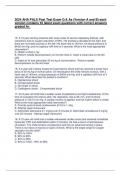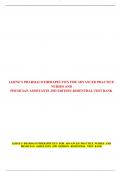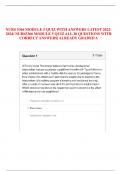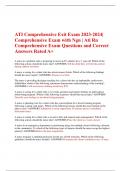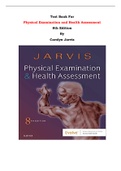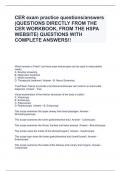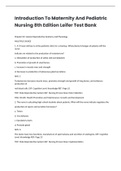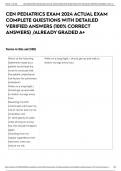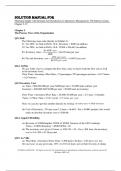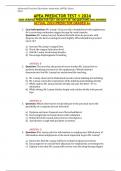Tentamen (uitwerkingen)
AHA PALS Post Test Exam Q & As (Version A and B) each version contains 33 latest exam questions with correct answers graded A+
- Vak
- Instelling
AHA PALS Post Test Exam Q & As (Version A and B) each version contains 33 latest exam questions with correct answers graded A+
[Meer zien]
